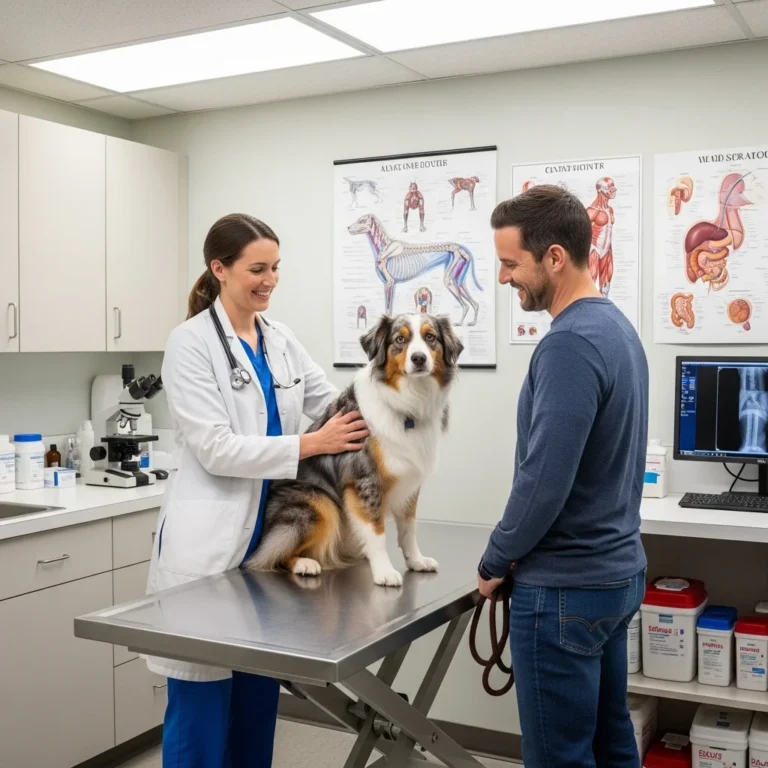
I. dog penis & Anatomy Basics
Okay, let’s be honest—talking about a dog penis isn’t exactly dinner-table conversation. But if you’ve ever owned a male dog, you’ve probably noticed some things that made you curious (or mildly alarmed). Don’t worry, it’s all part of being a responsible pet parent. Understanding how things work down there can actually save your dog from a lot of discomfort—and you from unnecessary panic.
What are the main anatomical parts of a dog’s penis (root, body, glans, bulbus glandis, os penis)?
A dog’s penis is more complex than you might think. Here’s a quick breakdown:
- Root (base) – tucked inside the body, keeping everything anchored in place.
- Body (shaft) – that’s the main part you see when your dog’s excited.
- Glans – the softer tip at the end.
- Bulbus glandis – that weird-looking swelling you see during mating; it’s totally normal and helps with “the tie.” (source)
- Os penis (baculum) – yes, dogs actually have a tiny bone in there! It gives structure even when not fully erect. (source)
All these parts work together to help your pup with everything from peeing to breeding.
What is the os penis (baculum) and what does it do?
The os penis, or baculum, is a small bone that makes a big difference. Unlike humans (no offense, guys), dogs have built-in structure in their penis, so they don’t rely only on blood flow for firmness. This little bone helps with mating and keeps everything stable during the process. (source)
What is the prepuce (sheath) and what is smegma?
That little “pocket” of skin that hides your dog’s penis when it’s not out? That’s the prepuce, or sheath. It’s basically a protective sleeve that keeps dirt and bacteria away. (source)
Then there’s smegma—the slightly gross but totally normal yellowish gunk that sometimes shows up. It’s made of oils, dead cells, and mucus, and it helps keep things lubricated. A little is fine; a lot might mean a trip to the vet. (source)
How does the canine penis differ from human anatomy?
Dogs definitely win the anatomy award for weirdness here.
- They’ve got the os penis bone—humans don’t.
- The bulbus glandis helps them “lock” during mating—no human equivalent there.
- And their penis hides completely inside a sheath until it’s go-time.
- Bonus: their erections involve both blood flow and bone structure. Talk about multitasking.
Once you get the basic layout, all the strange behaviors make way more sense.
II. Normal Behavior & Function
Why does my dog lick his penis so often?
If your dog’s licking himself a lot down there, don’t panic—it’s usually just a cleaning ritual. They do it to wipe off smegma or relieve a little itch. But if it’s nonstop licking, redness, or swelling, that’s your cue to call the vet. (source)
Can neutered dogs still get erections or mount objects?
Surprise—yes, they can. Even without the hormones, dogs still have reflexes and memories. So if your neutered boy humps a pillow or your leg, it’s not always about sex; sometimes it’s just habit or excitement. (source)
Why does my dog hump pillows/people — is it sexual or behavioral?
It depends. Mounting can mean a few things:
- He’s feeling flirty (especially if not neutered).
- He’s asserting dominance (classic dog move).
- He’s bored or anxious.
- Or he just likes the feeling—hey, we don’t judge.
If it’s happening constantly or seems compulsive, have a quick chat with your vet or a dog behaviorist.
Is it normal for an erection to last for a while in dogs?
Yes, especially after excitement or play. Some dogs stay “out” for several minutes—it’s normal. But if your dog’s penis stays stuck out for too long or starts swelling painfully, that’s paraphimosis, and it’s an emergency. (source)
III. Hygiene, Cleaning & Normal Discharge
What color or amount of smegma or discharge is normal, and what causes it?
A little yellow or white goo is totally fine. Dogs make smegma naturally, especially unneutered males. It’s kind of like natural WD-40 for their prepuce. If the discharge smells weird, turns dark, or there’s a lot of it—get it checked. (source)
When is penile discharge a sign of infection (odor, color change, blood)?
If you see green, brown, or bloody gunk, or if it smells funky, it’s likely an infection like balanoposthitis. Other red flags: swelling, pain, or your dog licking himself like crazy. (source)
How should I clean my male dog’s prepuce safely?
Cleaning isn’t hard—just gentle:
- Use warm water and a soft cloth or gauze.
- No soap unless your vet says so.
- Don’t force anything if he resists.
- Dry softly with a towel.
And seriously—don’t go poking around too deep. If you’re unsure, ask your vet to show you how.
Can poor hygiene lead to balanoposthitis or other issues?
Totally. If gunk and bacteria build up, you can end up with inflammation or infection. Keeping things clean and checking regularly can prevent balanoposthitis and other problems. (source)
IV. Common Infections & Health Issues
What are the signs of a penile or preputial infection (swelling, pus, smell, pain)?
If it’s red, puffy, smells bad, or oozing pus—something’s up. Your dog might even whimper or avoid sitting. Those are textbook infection signs and mean it’s time for the vet. (source)
Could lumps, sores, or bumps on the penis be cancer, warts, or something else?
Yep, it’s possible. Some lumps are harmless, like warts or cysts. Others could be CTVT (a transmissible tumor), papillomas, or cancer. (source) Always get lumps checked—it’s better to be safe than sorry.
Could penile issues be caused by urinary tract infections, bladder stones, or prostate problems?
For sure. Everything in that area is connected. A UTI, stones, or prostate swelling can cause weird discharge, straining to pee, or irritation. (source)
How do prostate diseases affect penile or preputial health?
In older, unneutered males, the prostate often enlarges (thanks, hormones). That can cause blood-tinged discharge or urination trouble. Luckily, neutering usually fixes or prevents it. (source)
Can blood in urine or from the penis indicate a serious disease?
Yes, and it’s not something to wait on. Blood can mean infection, stones, trauma, or even cancer. Always call your vet if you spot it. (source)
Can dogs get sexually transmitted infections?
They can, though it’s rare. The main one is canine transmissible venereal tumor (CTVT), a weird contagious cancer that spreads through mating. (source)
V. Emergencies & Urgent Conditions
What causes phimosis or paraphimosis in dogs, and when is it an emergency?
- Phimosis means the penis can’t come out of the sheath.
- Paraphimosis means it’s stuck out and can’t go back in.
The second one’s an emergency—circulation cuts off, and tissue can die. (source) If it’s been more than half an hour and it’s swollen or red, get to the vet immediately.
What should I do if my dog’s penis won’t retract or becomes swollen/red?
Here’s the drill:
- Keep it moist with a water-based lubricant.
- Check if there’s hair or string wrapped around it.
- Don’t force it!
- Head to the vet right away.
They’ll usually use sedation and gently get things back in place. (source)
VI. Reproductive & Mating Questions
Why do dogs “tie” during mating, and what part of the penis causes it?
That famous “tie” during dog mating is thanks to the bulbus glandis. It swells inside the female and locks them together so sperm transfer happens efficiently. (source) Weird? Absolutely. But perfectly normal.
How long does the tie usually last and when should breeders intervene?
It can last anywhere from 5 to 30 minutes, and no—don’t pull them apart! That can cause injury. Just let nature do its thing unless one dog’s clearly in distress. (source)
VII. Veterinary Diagnosis & Treatments
How do vets diagnose penile or preputial problems?
Your vet might:
- Do a hands-on exam
- Take urine or discharge samples
- Use imaging like X-rays or ultrasound
- Maybe check the prostate (yep, that way)
- Run bloodwork to look for infection or organ issues (source)
What are common medical and surgical treatments for penile diseases?
Depending on what’s going on, treatment can include:
- Antibiotics and anti-inflammatory meds
- Surgery for tumors or blockages
- Preputial widening if the opening’s too tight
- In bad trauma cases, partial amputation (rare)
- And sometimes, just a good cleaning routine
When is neutering recommended to reduce reproductive problems?
Vets often suggest neutering if:
- The dog has prostate or hormone-related issues
- There’s chronic infection or swelling
- You’re not planning to breed
It can prevent a ton of future issues, especially in older males.
VIII. Preventive Care & Monitoring
How often should I check my male dog’s genital area?
Quick peek once a week is perfect.
- Check for swelling, discharge, or changes in color.
- Notice if licking habits increase.
- Keep everything clean and dry.
Catching issues early makes treatment way easier—and way less awkward for both of you.
So yeah, it’s not the most glamorous topic, but keeping an eye on your dog’s “private business” is just part of good pet care. Once you know what’s normal and what’s not, it’s a whole lot less weird—and your furry buddy will be happier (and healthier) for it.
please leave comment
you may like it






